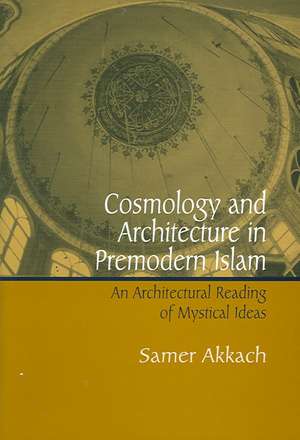Cosmology and Architecture in Premodern Islam
en Limba Engleză Carte – 31 mai 2006
Preț: 187.86 lei
Preț vechi: 221.37 lei
-15% Nou
Puncte Express: 282
Preț estimativ în valută:
35.95€ • 37.09$ • 30.43£
35.95€ • 37.09$ • 30.43£
Comandă specială
Livrare economică 14-26 februarie
Doresc să fiu notificat când acest titlu va fi disponibil:
Se trimite...
Preluare comenzi: 021 569.72.76
Specificații
ISBN-13: 9780791464120
ISBN-10: 0791464121
Pagini: 262
Dimensiuni: 156 x 228 x 19 mm
Greutate: 0.48 kg
Editura: State University Press of New York (SUNY)
ISBN-10: 0791464121
Pagini: 262
Dimensiuni: 156 x 228 x 19 mm
Greutate: 0.48 kg
Editura: State University Press of New York (SUNY)
Notă biografică
Samer Akkach is Associate Professor in History and Theory of Architecture at the University of Adelaide, Australia, and the Founding Director of the Center for Asian and Middle Eastern Architecture (CAMEA).
